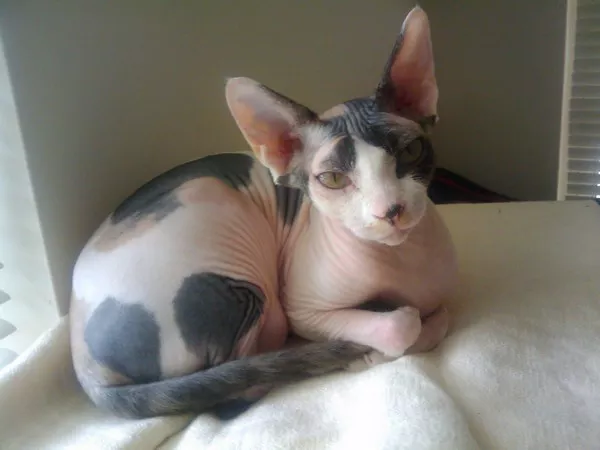Fleas, those tiny, agile nuisances, are not just a problem for our canine companions; they can infest our feline friends too. If you’ve noticed your cat scratching more than usual or small, dark specks in their fur, it’s time to take action. This article serves as a comprehensive guide on what to do if your cat has fleas, offering insights into prevention, identification, treatment options, and creating a flea-free environment for your beloved feline companion.
Understanding Fleas and Their Impact on Cats:
The Flea Lifecycle:
Fleas undergo a four-stage life cycle: egg, larva, pupa, and adult. Understanding this cycle is crucial for effective flea control. Adult fleas feed on blood, and their bites can cause itching, skin irritation, and even allergic reactions in some cats.
Common Signs of Flea Infestation:
Recognizing the signs of a flea infestation is essential for prompt intervention. Scratching, biting, excessive grooming, hair loss, and the presence of small, dark specks (flea dirt) in your cat’s fur are indicators of potential flea activity.
Identifying Fleas on Your Cat:
Thorough Examination:
Begin by conducting a thorough examination of your cat’s fur and skin. Use a fine-toothed comb to part the fur, paying close attention to areas where fleas tend to congregate, such as the neck, base of the tail, and abdomen.
Flea Dirt Test:
Flea dirt, which is actually flea feces, appears as small, dark specks in your cat’s fur. To distinguish flea dirt from regular dirt, place the specks on a damp paper towel – if they turn reddish-brown, it’s likely flea dirt as it contains digested blood.
Immediate Steps to Take If Your Cat Has Fleas:
Isolate and Treat the Cat:
If you confirm a flea infestation, isolate your cat from other pets to prevent the spread of fleas. Begin treatment promptly to alleviate your cat’s discomfort and prevent further infestation.
Use Flea Combs:
Regularly comb your cat’s fur with a flea comb to remove adult fleas and flea dirt. Comb from head to tail, paying extra attention to the neck and tail base. Drown captured fleas in soapy water to ensure they are disposed of.
Bathe Your Cat:
While not all cats enjoy baths, a gentle flea shampoo can be effective in killing adult fleas. Ensure the water is lukewarm, and use cat-friendly shampoos to avoid skin irritation. Repeat as recommended by the product.
Choosing the Right Flea Treatment for Your Cat:
Topical Treatments:
Topical flea treatments, applied to the back of your cat’s neck, are a popular choice. These treatments often provide month-long protection and kill fleas at various stages of their life cycle.
Oral Medications:
Oral flea medications are available in pill or chewable form. These medications are effective in killing adult fleas and disrupting the flea life cycle. Consult your veterinarian to choose the most suitable option for your cat.
Flea Collars:
Flea collars emit chemicals that repel and kill fleas. While effective, some cats may be sensitive to the collar’s ingredients. Choose collars with care, considering your cat’s comfort and potential allergic reactions.
Prescription Products:
In severe cases, prescription flea treatments may be recommended by your veterinarian. These products are often more potent and may be necessary for persistent infestations.
Addressing Flea Prevention:
Regular Veterinary Check-ups:
Schedule regular veterinary check-ups to monitor your cat’s overall health and discuss flea prevention strategies. Veterinarians can recommend the most suitable flea prevention products based on your cat’s specific needs.
Maintaining a Clean Environment:
Regularly vacuuming and cleaning your home helps eliminate flea eggs and larvae. Focus on areas where your cat spends time, including bedding, carpets, and furniture.
Use Flea Preventatives Year-Round:
Fleas are resilient, and their life cycle can persist even in colder months. Consider using flea preventatives year-round to maintain consistent protection for your cat.
Outdoor Precautions:
If your cat spends time outdoors, take precautions to minimize exposure to fleas. Trim tall grass and weeds, keep the lawn short, and discourage wild animals from frequenting your yard.
Consult Your Veterinarian:
Before starting any flea prevention regimen, consult your veterinarian. They can provide tailored advice based on your cat’s health, lifestyle, and potential exposure to fleas.
Creating a Flea-Free Home Environment:
Wash Bedding and Linens:
Regularly wash your cat’s bedding and linens in hot water to eliminate any flea eggs or larvae. Use pet-safe detergents to avoid skin irritation.
Vacuum Thoroughly:
Vacuum your home regularly, focusing on areas where your cat spends time. Dispose of the vacuum bag or clean the canister promptly to prevent fleas from re-infesting your home.
Treat Your Home:
Consider using flea control products designed for the home environment, such as sprays or foggers. Follow the product’s instructions carefully and ensure your cat is removed from treated areas.
Maintain Outdoor Spaces:
If your cat ventures outdoors, maintain your yard to minimize flea habitats. Keep grass short, remove debris, and discourage wildlife that may carry fleas.
See Also: How to Give a Flea Bath to Your Cat? A Simple Guide
Conclusion:
Dealing with a flea infestation in your cat requires a combination of immediate action, appropriate treatment, preventive measures, and maintaining a clean environment. By understanding the lifecycle of fleas, identifying signs of infestation, and choosing the right treatment options, you can ensure your cat’s well-being and create a flea-free haven for your feline friend.
Remember, consulting your veterinarian is crucial at every step of the process, from identification to treatment selection and ongoing prevention. With dedication and a proactive approach, you can effectively tackle those tiny troublemakers and provide your cat with the comfort and care they deserve.


























